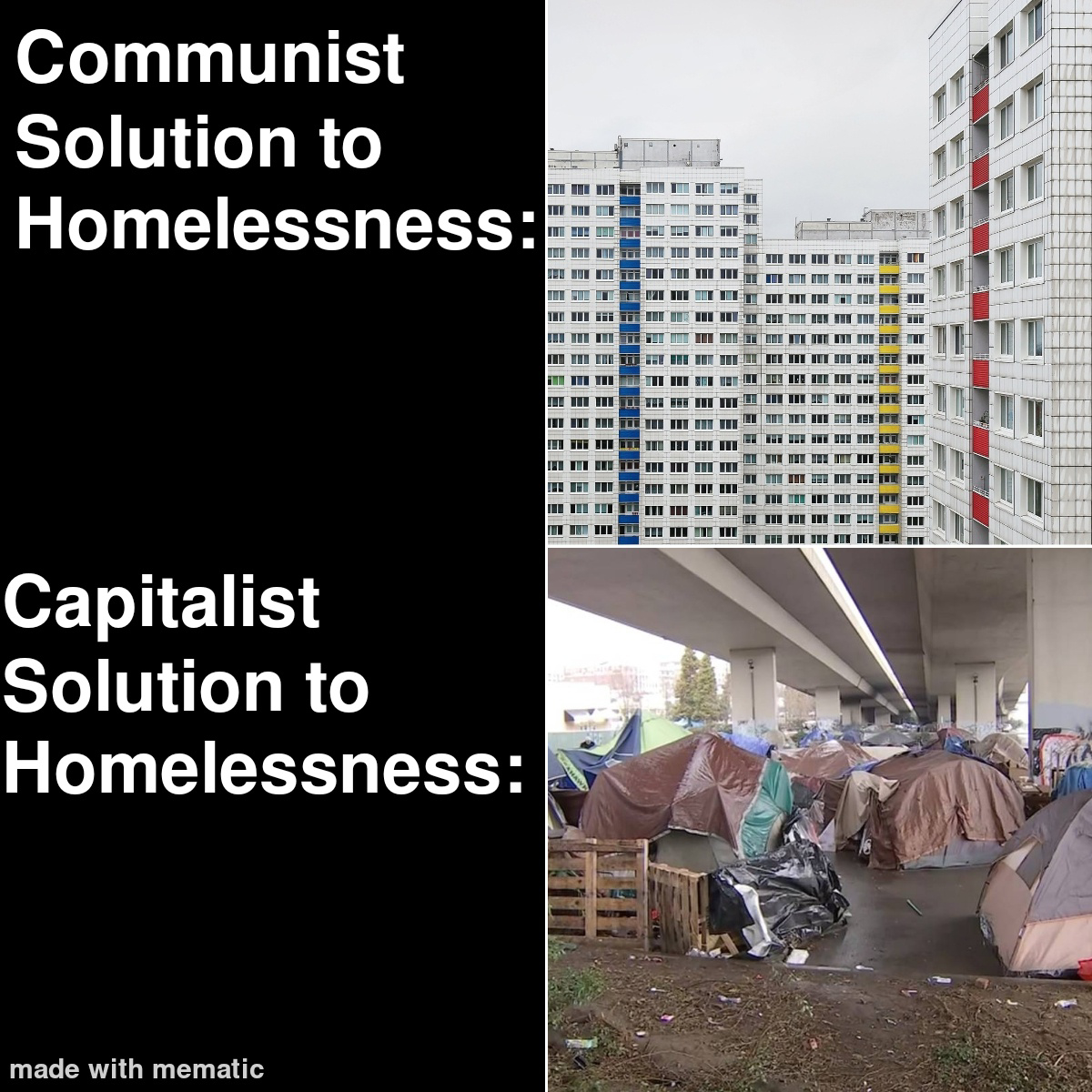this post was submitted on 11 Nov 2023
1233 points (82.4% liked)
Memes
49739 readers
1437 users here now
Rules:
- Be civil and nice.
- Try not to excessively repost, as a rule of thumb, wait at least 2 months to do it if you have to.
founded 6 years ago
MODERATORS
you are viewing a single comment's thread
view the rest of the comments
view the rest of the comments

Except the concrete spikes under bridges are from China: https://www.dailymail.co.uk/news/article-2168175/Are-lethal-concrete-spikes-stop-beggars-sleeping-city-bridges-REALLY-Chinas-best-option-stop-homeless-problem.html
See, they even have a better resolution image that doesn't conveniently make it impossible to distinguish the Chinese characters the ad on the wall has:
You can tell the capitalist solution by the desire to avoid lawsuits from injuries by sticking to the least potentially hazardous solutions, such as the bench. In some states they also have metal spikes that are rounded to avoid impalement and scrapes, and the density tends to be less to decrease the risk.
The communist solution is always right, so you must be the one that's wrong, ergo no need to worry about lawsuits. Just select the cheapest option that can justify the city's budget to the central government, since there's no real checks and balances on it because hey, communist government, ergo right and already represents the community, so how can you beat perfection? Plus the punishments from the central government to the city authorities are so severe, that how could that encourage a culture of deceit and suppression among them!?
They are both despicable solutions, but since OP and commenter decided to make the false comparison ... Maybe I should link the videos of the collapsing buildings, since these have been built upon the same principle in China.
Same solutions are also in a lot of other countries, apart, yes, China is called Communist, but really it's not, only one party and one leader, not selected by the people and more capitalist as other things. Hostile architecture is the solution by a failed government or system, to keep the streets 'clean' of the signs of its failure, simply this, and it is a global problem
etc..
It's funny how you can tell how able citizens are able to hold the governments of those countries accountable and how much they value life by the degree of a potential health hazard their hostile architecture is. It really doesn't indicate a failed government just having them, just one that has failing social nets for the homeless.
A failed social system is always the consequence of a lack of social policies, either due to ineptitude or disinterest, inherent to neo-liberalism, when percentages in the stock market are more important than the well-being of the population. This is where poor and homeless people are produced, instead of preventing them from reaching this condition. Having a fixed home is a vital and basic condition for social reintegration, since without an address it is impossible to get a job or to even have a bank account and with this it is also impossible to get a home. A vicious circle that you enter once you are on the street. But there are other possibilities as shown in Finland, how to reduce Homelesness and with an inversion initial, above saving money in social costs.
https://www.theguardian.com/cities/2019/jun/03/its-a-miracle-helsinkis-radical-solution-to-homelessness
Better as spikes in benches and under bridges.
Well, yeah, it's a failing social system, not necessarily a failed government. I don't disagree with you, but the reason that there's no housing available is because it isn't just the government, which in Finland is also a representative democracy, nor the economy, which in Finland is as capitalist as any euro.
It's due to things like societies, cultures, and banking systems that create and foster housing and property bubbles. It's due to things like the power dynamics between the socioeconomic disparity and the difference between the wealth of the governments entities in charge of these social systems versus the influence from business, private, and banking interests from the outside. Then there's the laws where actually trying to help can make you more liable if you don't provide enough aid or are held responsible for the condition of those you are helping, a fear particularly present to many people in the US and China alike.
Finland has a small socioeconomic gap between its extreme while being one of the richest per capita in the EU, but it also has much more control over who can become citizens, prioritizing wealthy neighbors over the rest of its migrants and trying to reduce it to keep it from saturating its social systems. Not every country can adopt the same solution without massive reforms and geographical shifts. It doesn't mean that spikes in benches and under bridges are the solution.
The whole western World have a Capitalist system, but there are differences in different countries, depending on whether the left or the right governs, which is directly expressed in social rights and social support.
European capitalism is not nearly the same as that of the United States, a country where homeless people are manufactured en masse due to the total lack of social investment and labor rights. This as a final result costs the state much more money than investments in social projects and laws.
It is clear that the construction of social housing is a large investment, but it is profitable as a result, apart from creating jobs and increasing people's general purchasing power, new income in public coffers by people who have managed to rebuild their lives. with a home, impossible when they were on the street, depending entirely on state aid without being able to contribute anything in exchange.
In Spain there are projects in this direction with the left gov, but not so much in the rest of Europe, mostly with governments on the right. The only thing missing for this is political will, nothing else.